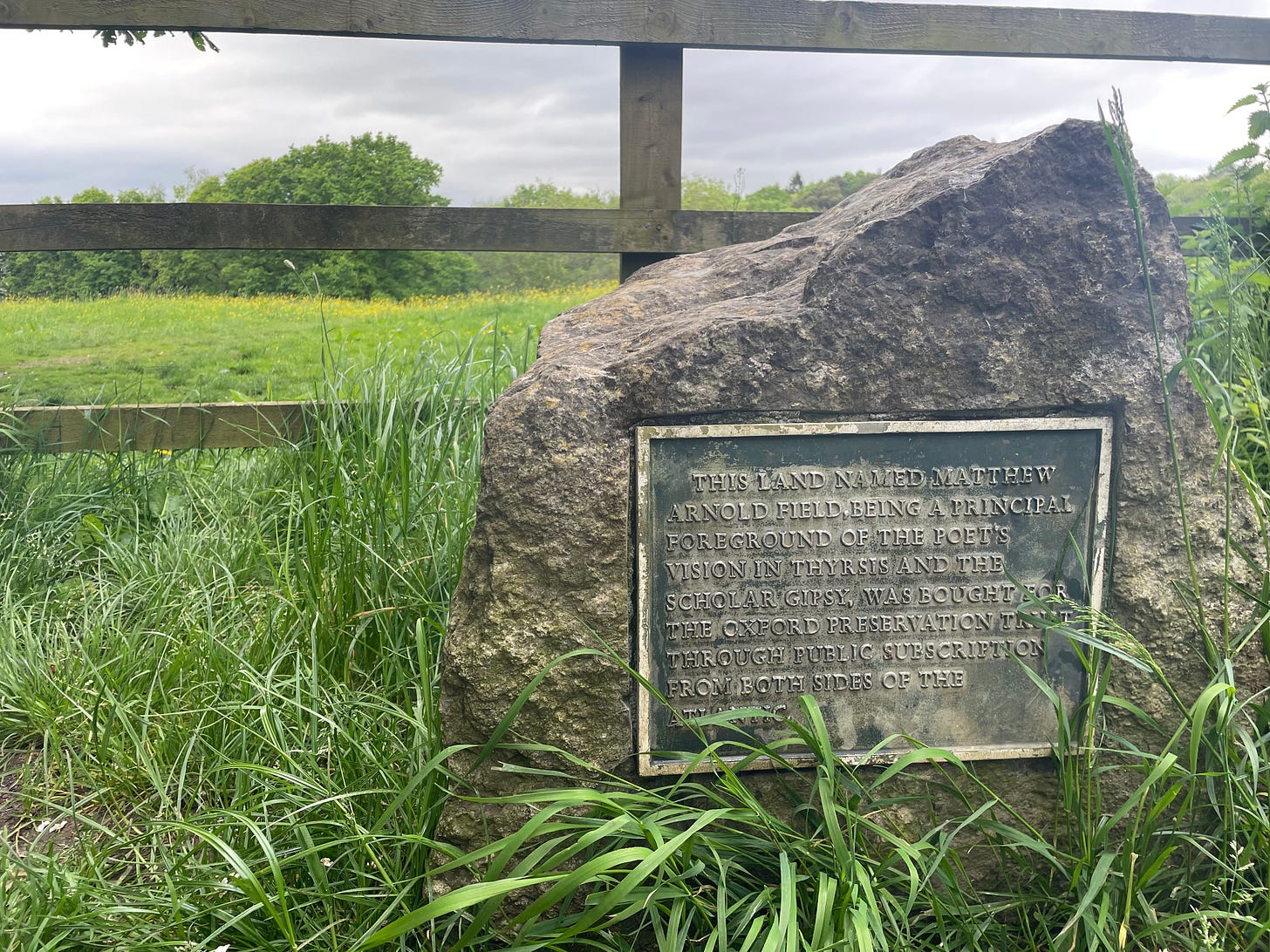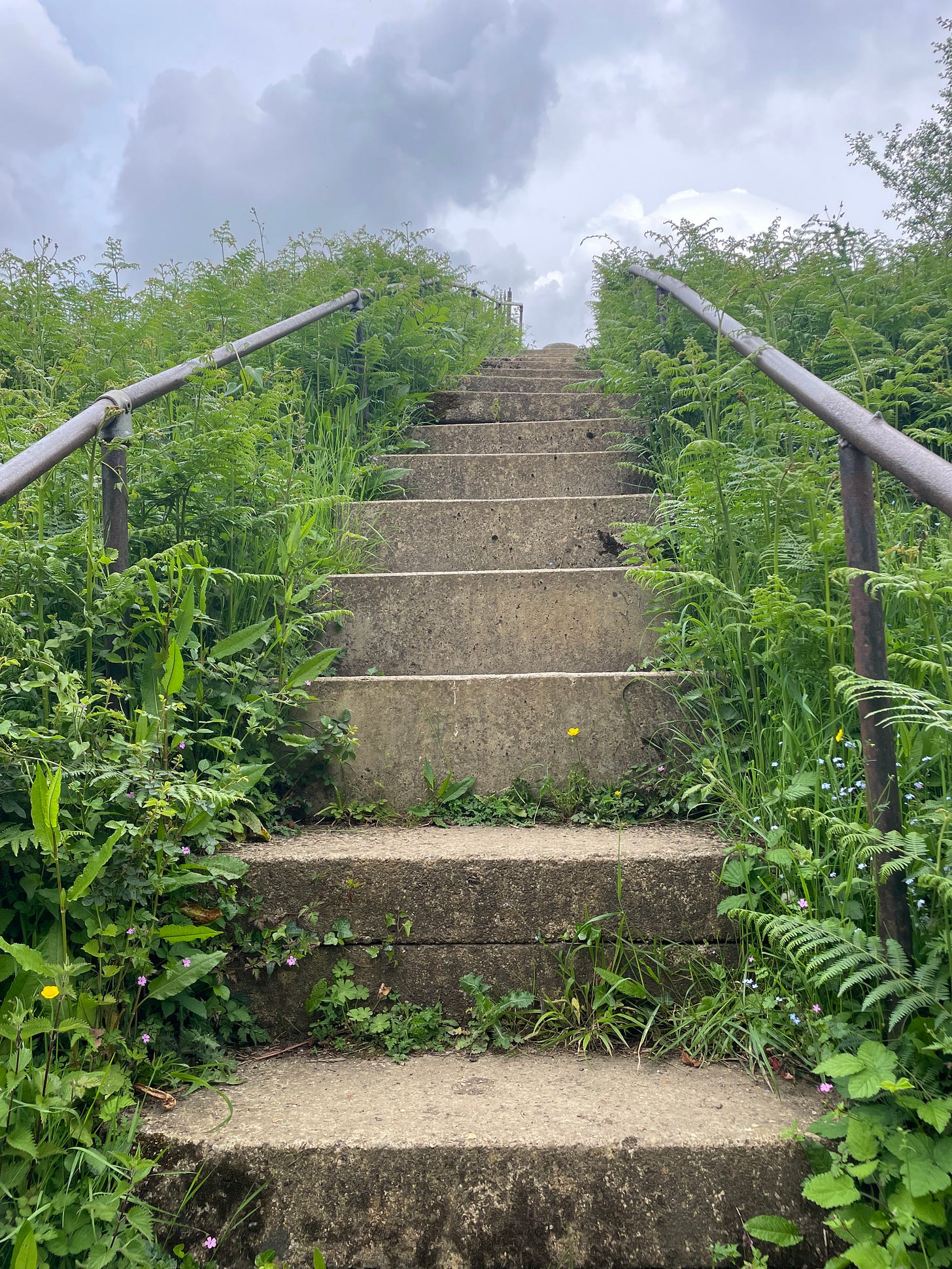Named Ways*
“This Land Named Matthew Arnold’s Field…” begins the sign fixed to a rock, marking the entrance to a piece of land just south of Oxford. I am developing a habit of stopping off for a walk around Old Boars Hill on my way home from the new job. It’s a dreamy space of privilege and beauty, previously home to poets and archaeologists, academics and individuals seeking healthy respite on a hillside. At this time of year, buttercups dominate the meadowland, pouring over its gentle slopes, while the wooded areas are frilled and softened with ferns.
My granddad used to deliver bread to the poet laureate John Masefield, who settled here in the 1920s to dabble in pastoral living and beekeeping (and theatricals). Last year I tracked Granddad’ journey from the bakehouse in Wootton to this cluster of grand estates and arts and crafts cottages, imagining his horse and cart pulling up the hill filled with loaves for the rich inhabitants and their households. Masefield’s cottage – in reality a substantial residence with extensive grounds, which once also incorporated ‘Dingle Cottage’ as a home for the poet’s gardener – now sits behind a deep barrier of conifer hedging and as I wander past it looks like it is being renovated. I wonder who will take it on.
Granddad would have passed Matthew Arnold’s field on his rounds, although I am not sure if it would have been known as that at the time. Arnold was a busy poet, critic and schools inspector. He did not live at Boars Hill but was inspired by the view across to Oxford when he visited a friend as an Oxbridge student, and later fixed it in the line about ‘dreaming spires’ in his 1866 poem Thyrsis. The field was bought for the Oxford Preservation Trust in 1928, ‘through public subscription from both sides of the Atlantic’, and I suspect the name came from a desire to venerate the land by association with the cultural capital that Arnold brought.
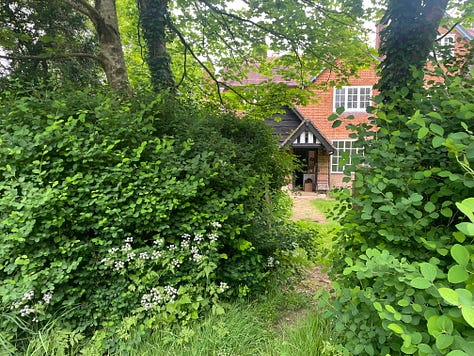
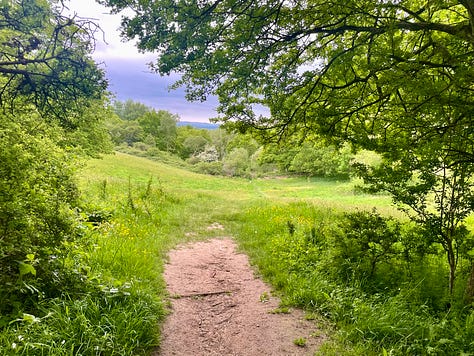
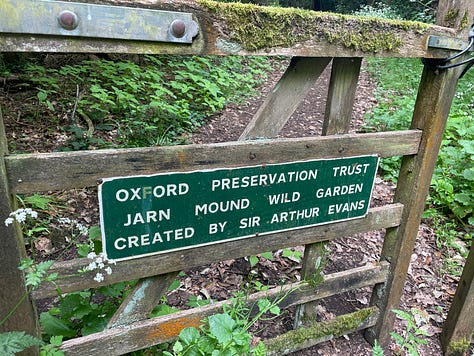
It makes me consider named places. Who gets to have their name on a sign or a map and who doesn’t? What difference does it make to walk along ‘Victoria Road’ rather than ‘Cow Lane’? Not far from Matthew Arnold’s field is ‘Jarn Mound,’ an artificial hillock conceived and paid for by the renowned archaeologist Arthur Evans to offer up an enhanced version of Arnold’s classic promontory view. ‘Jarn’ is apparently the name the residents of Wootton gave to the lower slopes of Boars Hill. As I stomp up the concrete steps, almost too steep for my short legs, I wonder if Granddad used this vernacular as a boy.
The top of the mound has become surrounded by such a thick canopy of tall trees that it is now more folly than viewpoint. I still love the thrill of a climb, and admire the ambition of Evans’ original project, which took nearly three years and extensive resources to complete. Jarn Mound is sat in a beautiful wild garden, dotted with stone benches perfect for sitting and contemplating the rich echo of names in this small patch of Oxfordshire.
* A bonus post today…blame technical issues earlier!


